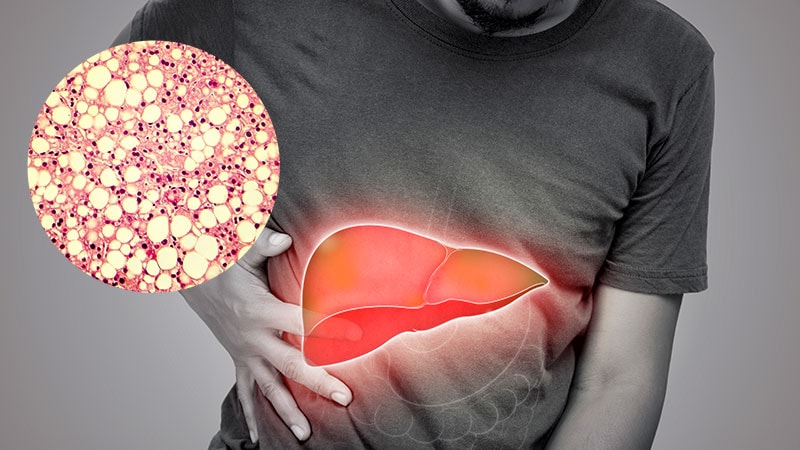TOPLINE:
The prevalence of steatotic liver disease (SLD) is 12.8% among lean US adults, with metabolic dysfunction–associated SLD (MASLD) accounting for 9.3% overall and a higher prevalence in non-Hispanic Asian and Hispanic individuals.
METHODOLOGY:
- Researchers investigated the prevalence of SLD in 2965 lean adults (body mass index less than 23 for non-Hispanic Asian individuals and less than 25 for other races/ethnicities; age, > 18 years) from the National Health and Nutrition Examination Survey (NHANES) between 2017 and 2023.
- SLD was defined using controlled attenuation parameter scores ≥ 263 dB/m, which had a sensitivity of 90%; a more stringent cutoff of ≥ 285 dB/m was used to optimize sensitivity and specificity.
- Patients with SLD were categorized into three groups: MASLD, metabolic dysfunction–related and alcohol-related SLD (MetALD), and alcohol-related liver disease (ALD).
- Transient elastography values were assessed, with specific values indicating significant fibrosis (≥ 8 kPa), advanced fibrosis (≥ 9.6 kPa), and cirrhosis (≥ 13.1 kPa).
TAKEAWAY:
- The weighted age-adjusted prevalence of SLD at a cutoff of 263 dB/m was 12.8%, representing approximately 5.9 million of the estimated 52.3 million lean adults in the United States; MASLD accounted for 9.3%, MetALD for 1.3%, and ALD for 1.0%.
- The prevalence of MASLD was highest in non-Hispanic Asian individuals (16.7%), followed by Hispanic individuals (12.1%), and non-Hispanic White individuals (8.9%). In contrast, the prevalence of MetALD was highest among non-Hispanic White individuals (1.6%).
- Among individuals with MASLD (≥ 263 dB/m), the age-adjusted prevalence was 5.6% for significant fibrosis, 2.4% for advanced fibrosis, and 2.0% for cirrhosis.
IN PRACTICE:
“The prevalence of lean MASLD differs across various racial and ethnic groups, indicating notable health disparities,” the authors wrote. “Additionally, racial and ethnic minorities often experience higher rates of comorbid conditions such as diabetes and hypertension, complicating MASLD management and worsening health outcomes.”
SOURCE:
This study was led by Donghee Kim, MD, Division of Gastroenterology and Hepatology, Stanford University School of Medicine, Stanford, California, and was published online in Alimentary Pharmacology & Therapeutics.
LIMITATIONS:
This study relied on self-reported data for alcohol consumption, which may have introduced potential reporting bias. The NHANES dataset did not include histological data or imaging information, such as MRI or spectroscopy, which may have limited the study’s findings. Moreover, the absence of universally accepted cutoff guidelines for controlled attenuation parameter scores and liver stiffness measurements posed a challenge in standardizing the results.
DISCLOSURES:
The authors reported no specific funding for this study. They declared no conflicts of interest.
This article was created using several editorial tools, including AI, as part of the process. Human editors reviewed this content before publication.
Source link : https://www.medscape.com/viewarticle/over-5-million-lean-adults-united-states-burdened-liver-2025a10001n5?src=rss
Author :
Publish date : 2025-01-23 10:31:19
Copyright for syndicated content belongs to the linked Source.
